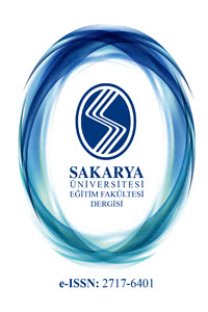ERKEN ÇOCUKLUK DÖNEMİ BEYİN GELİŞİMİ ve İLKÖĞRETİM MÜZİK PROGRAMI: UYUMLULAR MI?
Erken çocukluk dönemi gelişiminde ilerlemeler, müzik ve dilin paralellikleri ve temel eğitim müzik programı küçük çocukların müzik eğitimlerinde çok önemlidir. Müzik icrasında aktif, deneysel bir yaklaşımın kullanımı ile bilgili, ifade gücü yüksek müzisyenler yetiştirmeye yardımcı oluruz. Blacking’e göre dünyada o kadar çok müzik vardır ki müzik, dil ve din gibi, insanın kendine özgü bir özelliğidir. Müzik, genetik olarak bile aktarılabilir ve bu nedenle hemen hemen her insanda mevcuttur (Blacking, 1987: 122). Birkenshaw ve Fleming (1997) Blacking’in görüşünden, müzik yapma tutkusunun her çocukta bulunduğu fikrini ileri sürmüşlerdir. Müzik eğitimcileri olarak, son derece özveri gerektiren ve son derece tatmin edici bir mesleğimiz var. Her çocuğun müzik yapma tutkusunu gerçekleştirme fırsatı bize verilmiş. Çocuklara müziği hediye ediyoruz. Bu hediye, etkili bir şekilde verildiğinde, çocukların hayatları boyunca kullanıp besleyeceği bir şey olacaktır.
Anahtar Kelimeler:
-
Early Childhood Brain Development and Elementary Music Curricula: Are They in Tune?
Advancements in early childhood development, parallels of music and language, and the elementary music curriculum are invaluable in the music education of young children. By using an active, experimental approach to music making, we help develop literate, expressive musicians. In A Commonsense View of All Music, Blacking states, "there is so much music in the world that it is reasonable to suppose that music, like language and possibly religion, is a species-specific trait of man. Music may even be genetically inherited and therefore present in almost every human being" (Blacking, 1987: 122). Birkenshaw and Fleming (1997), draws from Blacking's statement that the desire to make music is inherent in all children. As music educators, we have an extremely demanding and incredibly rewarding job. We are given the opportunity to fulfill each child's desire to make music. We give children the gift of music. This gift, if given effectively, is something children will use and cherish for the rest of their lives.
___
- BIRKENSHAW and FLEMING, L. “Music For Young Children: Teaching For The Fullest Development of Every Child”. Early Childhood Connections, 1:6–13, 1997.
- BLACKING, J, A Commonsense View of All Music. Cambridge, MA: Cambridge University Pres, England – 1987.
- BOLTON, B. M. “Was That a Musical Response? Eliciting and Evaluating Musical Behaviors in Very Young Children”. Early Childhood Connections, 3: 14–18, 1996.
- Anonymous, Consortium of National Arts Education Associations. National Standards for Arts Education. Reston, VA: MENC, 1994.
- DEPIETRO, J. “Baby and The Brain: Advances in Child Development”. Annual Review of Public Health, 21: 455–71, 2000.
- FEIERABEND, J. “Developing Music Literacy: An Aural Approach for An Aural Art”. Early Childhood Connections, 3: 33–38, 1997a.
- FEIERABEND, J. “Music and Movement for Infants and Toddlers: Naturally Wonder-Full”. Kodály Envoy, 23(2): 7-10, 1997b.
- FORRAI, K. “The Influence of Music on The Development of Young Children: Music Research With Children Between 6 and 40 Months.” Early Childhood Connections, 4: 14–18, 1997.
- GORDON, E. “Early Childhood Music Education: Life or Death? No, a Matter of Birth and Life”. Early Childhood Connections, 3: 7–13, 1996.
- GORDON, E, A Music Learning Theory for Newborn and Young Children. 2nd ed, GIA Publications, Chicago – 1997.
- HEYGE, L. and SILLICK, A. “When Is The Right Time? Montessori and The Season for Writing and Reading”. Early Childhood Connections, 3:13–20, 1997.
- JENSEN, E. (1998). Teaching With the Brain in Mind. Alexandria, VA: Association for supervision and curriculum development – 1998.
- MCGRAW, G. “Singing in Early Childhood: A Re-Examination of Appropriate Practice”. Early Childhood Connections, 4: 25–35, 2002.
- MONASTERSKY, R. “A New Round of Research Rattles Old Ideas of How Infants Interpret the World”. Chronicle of Higher Education, 46(29): A22–24, 2000.
- NAEYC, (1997).National Association for the Education of Young Children. Licensing and public regulation of early childhood programs. Retrieved (Erişim Tarihi: 01/10/2004) http://www.naeyc.org/resources/position%5fst atements/ pslicense.htm October1, 2004 from
- PAUL, A. M. “A Different Tone of Voice”. Psychology Today 30(5): 22, 1997.
- PERRY, B. D. “The Developmental Hot Zone”. Early Childhood Today, 15(3): 30–32, 2000.
- TOTH, B. “Working For Family Literacy: A Conversation With Bea Romer”. Early Childhood Connections, 3: 39–42, 1997.
- WIENBERGER, N. M. “Brain, Behavior, Biology, and Music: Some Research Findings and Their Implications for Educational Policy”. Arts Education Policy Review, 99(3): 28-37, 1999.
- WISHON, P. M. and KONOPAK, B. “Historical Antecedents to the Emergence of Preschools in The 21st century”. Early Childhood Connections, 3: 7–14, 2000.
- WOLFE, P. “News on Brain Gain”. NEA Today, (17)6: 19-20, 1999.
- ISSN: 1303-0310
- Yayın Aralığı: Yılda 2 Sayı
- Başlangıç: 2001
- Yayıncı: Sakarya Üniversitesi
Sayıdaki Diğer Makaleler
KARADENİZ BÖLGESİNDE ESKİÇAĞ HALKLARI
Ahmet ÇAKIROĞLU, Ayşegül ATAMAN
İLKÖĞRETİM OKULLARINDA OKUL KÜLTÜRÜ
BAŞARININ SOSYO-KÜLTÜREL KÖKENLERİ BAŞARILI OLANLARLA YAPILAN SÖYLEŞİLER ÜZERİNDEN BİR İNCELEME
ÖĞRETMENLERİN SÖZLEŞMELİ İSTİHDAMI VE DURUMLARINA İLİŞKİN SÖZLEŞMELİ ÖĞRETMENLERİN GÖRÜŞLERİ
İLKÖĞRETİM 7. VE 8. SINIF ÖĞRENCİLERİNİN HAKLARINI BİLME DÜZEYLERİNİN ARAŞTIRILMASI
ERKEN ÇOCUKLUK DÖNEMİ BEYİN GELİŞİMİ ve İLKÖĞRETİM MÜZİK PROGRAMI: UYUMLULAR MI?
DUYGUSAL OKURYAZARLIK VE DUYGUSAL OKURYAZAR ÖĞRENME ORTAMLARI
